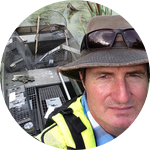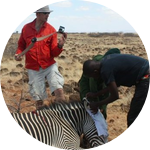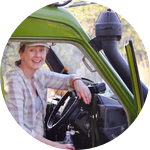About This Project
We are tracking lions and hyenas on a large wildlife conservancy in northern Kenya to find out how they share resources. Lions are blamed for killing most of the endangered species and livestock in the area, although there are many more hyena present than lions. We want to find out who is killing what, how often, where, and when. These data will help us develop conservation programs for both species, and hopefully prevent lions from being hunted to extinction.
Ask the Scientists
Join The DiscussionWhat is the context of this research?
Our team has been monitoring lions and other species living on the Lewa Wildlife Conservancy in northern Kenya for several years (click #1, #2, #3 and #4 for recent articles). We have recently discovered that there is a large, previously unknown population of hyena on the conservancy. Estimates from playback studies suggest that there may be up to 100 hyena living and hunting in the same areas as the roughly 25 resident lion. Lions are held responsible for most of the kills--of livestock and endangered species--on the conservancy although hyena may in fact be the prime predators. We have fitted seven lions and seven hyena with GPS tracking collars to follow their movements, so we can unravel the mystery of who is doing what, where, and how often.
What is the significance of this project?
Although lion ranging and hunting patterns have been extensively studied, hyena behaviors are much less well known. This will be the first study to look at how the two species overlap in the same landscape, and how they share prey resources. Are hyenas the cowardly scavengers portrayed in cartoons, or are they really the main predator in this area? We suspect that lions may be 'coasting' on the hyenas' kills, and then taking the blame from local communities for predating on livestock and other species. Finding out what is really going on in this ecosystem is crucial if we hope to save lions from being hunted to extinction.
What are the goals of the project?
We fitted 7 lions and 7 hyenas with GPS tracking collars in February - April of this year, and so we can now follow their movements on Google Earth. Now that we know where the animals are, we can put infrared camera traps in strategic locations, such as outside hyena den sites, so we can record what they hunt and when they make successful kills. We will also collect lion and hyena fecal samples, which provide a wealth of information on what the animals eat, as well as DNA for genetic analyses and cortisol to determine the stress levels of individuals. This will be the first study to see how lions and hyenas share the same landscape. These data are crucial to developing conservation management plans, both at this conservancy and in similar areas throughout East Africa.
Budget
We have already raised the funds necessary to purchase the GPS tracking collars ($5000 per collar, seven for hyena and seven for lions, for a total of $70,000 US). Now that we can see where the animals' ranges are via the GPS data, we need to closely monitor them using motion-activated infrared cameras. Using the cameras, we can observe hyenas entering and leaving their dens, and can also see what species they are hunting.
We will also be collecting fecal samples from both lions and hyenas, and analyzing the fecal contents using a good quality microscope. The fecal samples will tell us what the animals are eating, and will also be used to collect DNA to determine the relatedness of the animals, and cortisol to determine their stress levels.
Endorsed by
Meet the Team
Suzanne MacDonald
I am a professor who studies animal behavior, both in the field in Kenya, South Africa, Costa Rica, and Canada and also in zoo settings. I am passionate about learning about how animals think, and how we can get inside the unique perceptual and sensory worlds of other species. In captive environments, my goal is to increase psychological well being, particularly of primates, elephants and big cats, and improve animal welfare. In the field, my focus has been on reducing human-wildlife conflict, which is crucial to conservation efforts, whether with lions and elephants in northern Kenya or with raccoons in the backyards of downtown Toronto.
Lab Notes
Nothing posted yet.
Project Backers
- 9Backers
- 18%Funded
- $695Total Donations
- $77.22Average Donation


